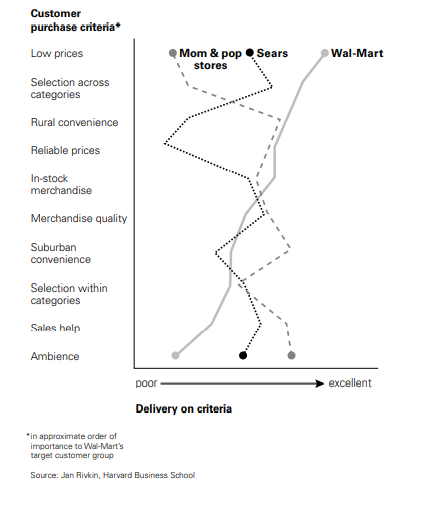We’ve been discussing strategy and how to move from a cost strategy to a differentiation strategy.
If you’re not sure about the difference between cost and differentiation we talk about it here.
In the last post, we showed how to determine those activities that your customers truly value.
The next step is to compare those activities to what your competitors are doing. As we have said, strategy at its essence is choosing to perform different activities than your competitors.
You need a way to map a path forward and determine strategic moves to make that are different but also add value.
Are your competitors offering features or services that you do not? Do competitors have a stronger brand? Do your competitors have deeper relationships with their customers?
How do you find out all this information?
Ask your sales team why they are losing deals.
Research competitor websites and look at their messaging.
Once you have this information, you can begin to map out how you compare to your top 3-4 competitors by using a strategy canvas.
Below is an example from David Collis and Michael G. Rukstad

Along the y-axis are the areas that you believe your company delivers value to the customer, listed in order of importance.
Along the x-axis is the level at which those offerings are delivered (poor to excellent).
This example is comparing Walmart, Mom and pop stores, and Sears. This is somewhat dated since Sears is out of business (in other words their strategy failed).
Using this framework, you can map your top 3-4 competitors and see where opportunities exist to add value.
There is another move you can make as well which we’ll talk about in our next post.
Need help with your strategy? Contact us.